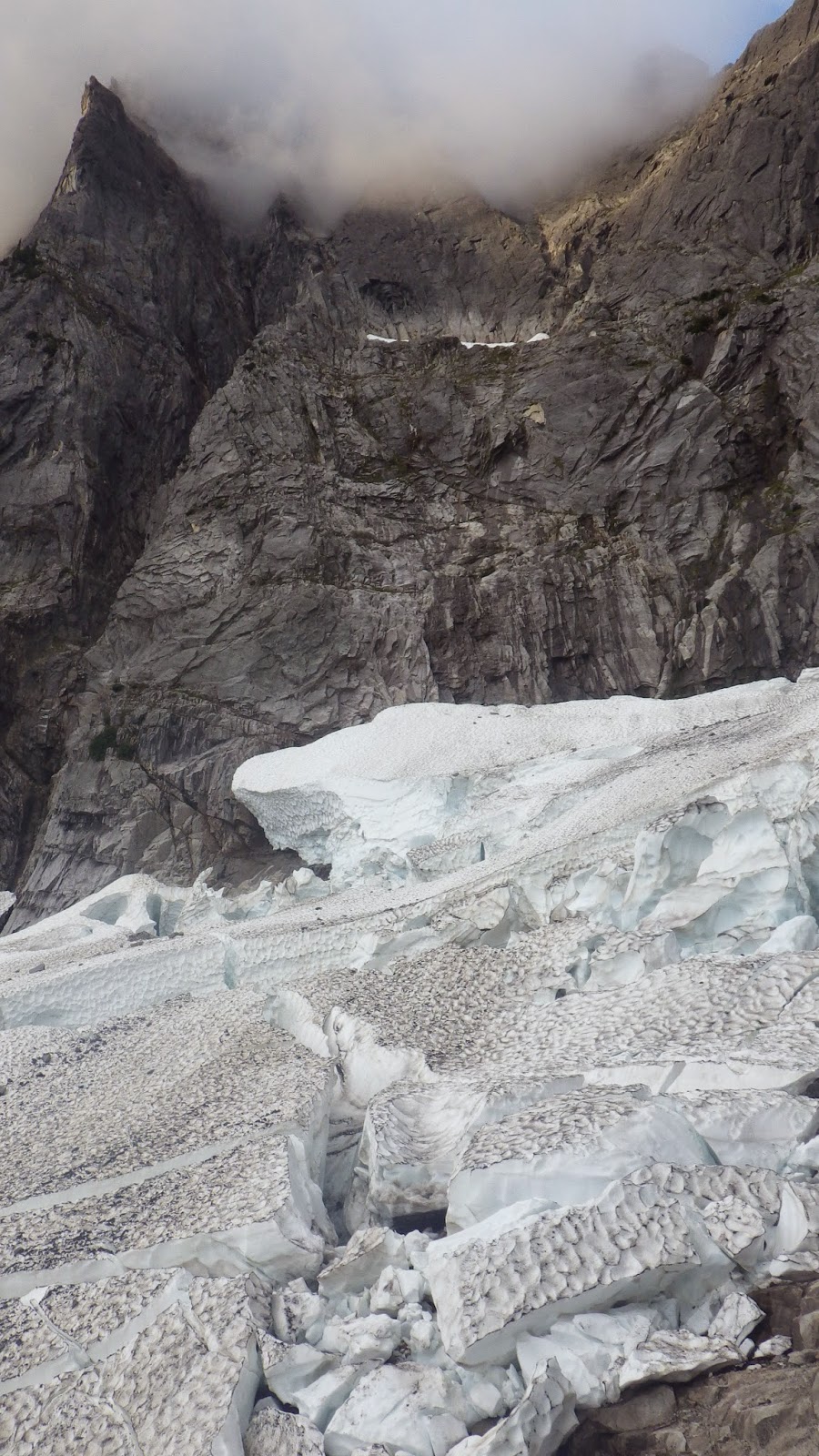I e-mailed my mom to tell her about our spontaneous trip into the Tantalus Range last weekend. She responded with:
“A spontaneous heli drop?!”
She had clearly seen this photo that Marc had posted on Facebook:
But it was spontaneous. Our plan was to climb in the Joffre Range but a power line had fallen across the road and blocked off the access so at the last minute we had a change in plans. An hour later we were unloading our bags from the helicopter onto the glacier under Mt. Dione.
 |
| Where the heli dropped us off (thats Dione in the background) |
We made a quick stop at the hut to drop off the extra gear and went out for an afternoon ridge scramble between Serratus and Dione. Then found a quick 2 pitch mixed route to get a feel for the conditions.
The first pitch was a chimney iced over with rime on the right and flakes of rock on the left. I torqued my left front-point into a microscopic crack and stemmed with my right. The pitch led us to a nice ice gully to the top of the ridge.
This gave us a great feel for the conditions, and conditions were excellent. The season had been bringing a west wind that had scoured the entire west face in rhyme. Our timing was perfect because just as we arrived the temperatures dropped and the Arctic Outflow kicked in; meaning a change in wind direction, now from the north. The north face was experiencing freezing winds up to 70km, while the west side was protected, sunny, and covered in ice.
Day two brought extreme winds to the col where the hut was located. We put on our arctic war proof jackets aka: Arc’teryx Dually, and faced the storm.
 |
| The second pitch on of our first day climb. |
 |
| The wind is blowing through the col behind me |
The next morning ee woke at 4:30 to boil water for the day, then headed out across the glacier to attempt route on the west face of Tantalus. The approach took about 2.5 hours to the base of of west face, including a steep down climb of step kicking.
We chose a line called the Kay- Mannix. We kicked steps in the steep couloir for quite a while
 |
| Mount Dione (right peak) and Mount Tantalus( left peak), view from the South west. We were headed fro the west face, the longest face. |
 |
| Me climbing the coulior |
until the ice tuned totally vertical, into a small waterfall. This was the limit of my ice soloing ability so Marc made a quick belay and I tied the rope around my waist. Just as I had finished the knot a spin drift avalanche came shooting over me.
“Keep your head down and hold on!” I could hear Marc shouting from above. He was off to the side and protected.
Literally this was the only thing I could do. The steepness of the section I was climbing was just enough to protect me from the debris and it projectiled over me. I was completely enveloped in the snow but I was able to pull out my ice tool and scale over to the right and out of the fall line.
From there we decided to avoid the gullies and head up a steeper mixed section. Marc took the first lead but at the end of the rope was struggling to find a belay. I was admiring the pleasant rock to the left imagining that it would be a superb rock climb. I then realized, this can’t be a good sign when the rock to my left is happily baking in the sun, and im climbing a route of frozen water. Either way, I climbed the pitch which was super techy and fun and I then lead an unprotected pitch of steep snow and ice. We then climbed to a sunny and melting ridge and decided to call it.
The sun was heating up the upper mountain and sending ice avalanches down all the couliors and the route would certainly take us the entire rest of the day to finish, possibly into the night. And descending winter routes is not always as straight forward as rock routes.
We descended the arête and made it down in 5 raps no problem.
That was the extent of my tantalus winter weekend.
 |
| The amazingly beautiful sunset from the hut |












